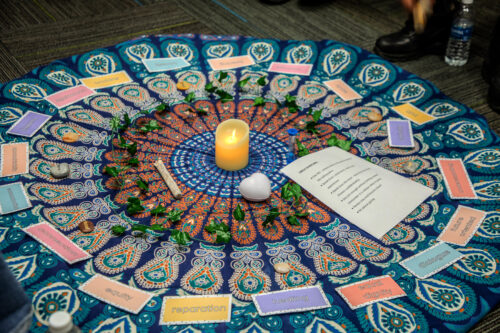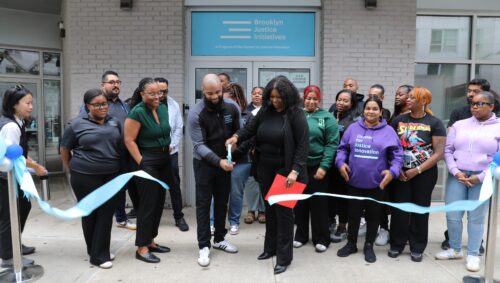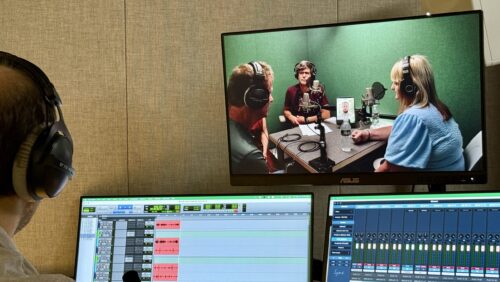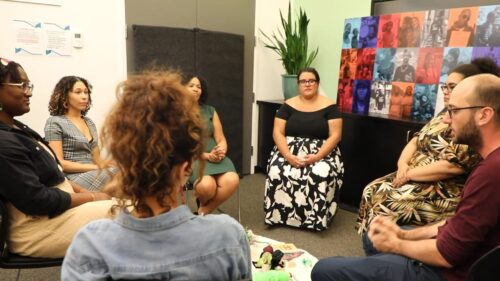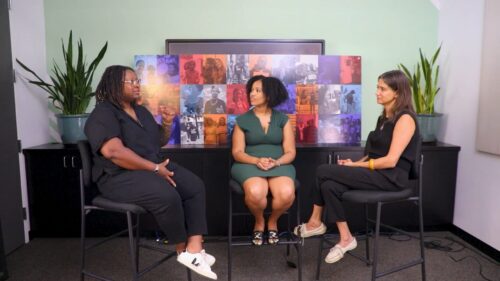Stories from the Field
In Fall 2007, the New York State Unified Court System and the Center for Courts and Communities (a project of the Center for Court Innovation) is publishing Personal Stories: Narratives of Drug Court Participants from across New York State. Here are three of the stories included in the book:
Brooklyn Family Treatment Court: A Young Mother Finds Encouragement to ChangeContributed by Judge Susan S. Danoff
A young mother gave birth to a child and both the mother and child tested positive for cocaine. The mother was found eligible for Brooklyn Family Treatment Court, signed the waiver and contract, and made an admission to drug use. The court arranged for the mother to enter the Odyssey House mother/child drug program with her infant.
The first time the mother returned to court for monitoring, the court noted her progress. She had 20 days clean, and about 15 people in the courtroom, including attorneys, court officers, the court clerk, and I, all applauded her progress. The mother turned to each person and waived (the “royal” wave, I might add!) with the biggest smile on her face. I think nobody had ever applauded anything she had ever done—literally or figuratively.
The next time the mother came to court, she had accumulated 50 days clean. Again everyone applauded at which point she stood up, raised her hands to the ceiling and said, “Yes!” Then she sat down and burst into tears. Through her tears, she told the court, “Thank you for having faith in me,” to which I responded, “We always had faith in you –now you have faith in yourself, too.”
I am happy to report that as of this writing, the mother has accumulated 120 clean days and continues to remain compliant with the mother/child drug program.
Erie County Family Treatment Court:She Found a New Life Contributed by Priscilla
My life began on July 19, 1966, born to Emma Jean and Steve. I am the sixth child out of seven. I was born in Chicago, Illinois. We lived in one of the roughest projects in the nation: The Cabrini Green.
I witnessed all types of violence and chaos everyday—whether it was on the streets or in our apartment. My oldest brother and sister were always fighting each other, as well as my mother and stepfather. When they would fight, I would hide until they finished. I really didn’t have any friends at school or at home because there was so much fighting. As a child, I didn’t know what to say to make the fighting stop, so I just lived through it. I was always surrounded by alcohol because my mother and stepfather drank a lot.
My mother battled two disease—mental illness and alcoholism. She was always in and out of the hospital. Then my world was shattered when I was told that my mother was gone from this world. I never had the opportunity to do the mother-daughter bonding as I would have liked. After my mother’s death, I was sent to live with an Aunt in Lackawanna, New York.
In a strange city, I didn’t know how to fit in. It took me awhile to get to know others. When I came around, I was about 16 years old. To fit in, I started drinking alcohol and smoking marijuana. When I graduated high school, I moved to Buffalo and continued drinking.
I started to use crack at the age of 28. I thought I was being productive because I had a job and wasn’t using everyday. My weekend use then became daily use. I let drug dealers in my home, had no food, the electric, and gas were shut off constantly.
I tried recovery before but wasn’t ready to stop using. As years went on, I kept using and things didn’t get any better.
In 2003, I entered Erie County Family Treatment Court entered, and I stayed until I stopped giving up on myself and on being a mother. I finally stopped using and decided to give life a second chance. There are so many details that are missing from this story, not because I left them out on purpose but because there is so much pain, and I’m not ready to let them surface again.
Recovery has been good to me. I am grateful to have Narcotics Anonymous in my life. As long as I don’t give up on N.A., I know that N.A. won’t give up on me. As I continue in recovery, I stay active with meetings, conventions, and doing work with my sponsor. I reach out to others when I am hurting and more importantly, I don’t use, no matter what is going on in my life.
As I stay in recovery, I apply the spiritual principles in my life. I do things with my children. I have a job that I love and hang with people that don’t use. On April 12, 2007, I celebrated three years of recovery.
I thank God for allowing me to go through Family Treatment Court because without its help, I don’t know where I would be today.
Jefferson County Drug Court:After his Final Arrest, He Said ‘Enough’Contributed by Mike
Two years ago I was lying face down on a cheap hotel room floor while detectives tore my hotel room apart. The task force had arrested me once again. Till then, I had no idea what I was going to have to do to get my life together. Over the course of the 10 years preceding that day, I had struggled against and had been defeated by my addiction to heroin and cocaine. I was caught up in the idea that I could use drugs successfully. After a while, it had gotten to the point where nothing else mattered. Even though I knew what I was doing was wrong, I could do nothing to stop it.
I remember sitting in jail, knowing that I had had enough. I had said that before but it was something that I knew I had accepted this time. Despite being sick from not having my drugs in me, I was relieved to have it over with. The worst thing I faced in jail was the uncertainty of what was going to happen to me. I thought for sure I was going to prison because this wasn’t my first offense.
It wasn’t long after that I was interviewed and approved for the Jefferson County Drug Court program. I was extremely fortunate to get the opportunity to make a change in my life. Having come to the point that I had accepted the fact that I was going to prison, being approved for drug court was something I had a lot of gratitude for. That gratitude that I had for being given the opportunity I was given, coupled with the acceptance that I had that I could not use successfully are what got me through what I had to do.
Drug court sent me to an intensive inpatient facility for a period of nine to 12 months. After my track record of completing short-term programs but still using it was the only logical option. I went into it with an open mind and I had made the decision that I was willing to do whatever I was asked to do. Most of all in that facility I learned to be a part of a community, something I had no idea about before I went there. After inpatient, it was recommended that I go to supportive living for a minimum of three months. It was a great opportunity to get on my feet and save money for independent living. While in supportive living it was mandated by drug court to attend 12 step meetings. Besides the initial opportunity that Drug Court had given me, this is the thing that I am most grateful for. I had been to meetings before but I was still thinking that some day I could go back to using successfully. Throughout my past, that has been my most destructive thinking.
When I got to the meetings I had no idea what I was going to find. I was as unsure as I was going into treatment in the beginning. The biggest thing that helped was that I had remained in the frame of mind that I would do anything to stay clean. The problem remained, that up until that point, I had no idea how to stay clean on my own. In the past I had gone to treatment and stayed clean for a while and then gone back to my old ways. The difference this time was that I found a fellowship of recovering addicts that I could relate to. I found other people there that had been just as messed up as I was and that were staying clean. In addition to trying to stay clean; they were also trying to help each other learn how to live. The meetings are what saved me from myself and from my pattern of falling back into the drugs.
It wasn’t long before I was moved into my own place and was graduated from Drug Court. I still go to meetings regularly and maintain my recovery. I have gotten back into school where I am going after a degree in Human Services. Hopefully one day I can help other people with their addiction. For the first time in as long as I can remember I am happy with where my life is. I don’t feel the need to put a substance in my body to feel comfortable with myself. I was given an opportunity to turn my life around and that is what I did. I am grateful for every day clean and continue to try to improve myself.
